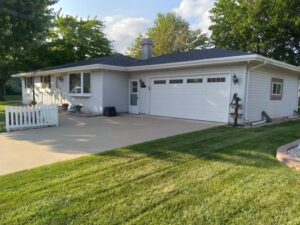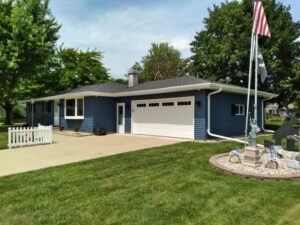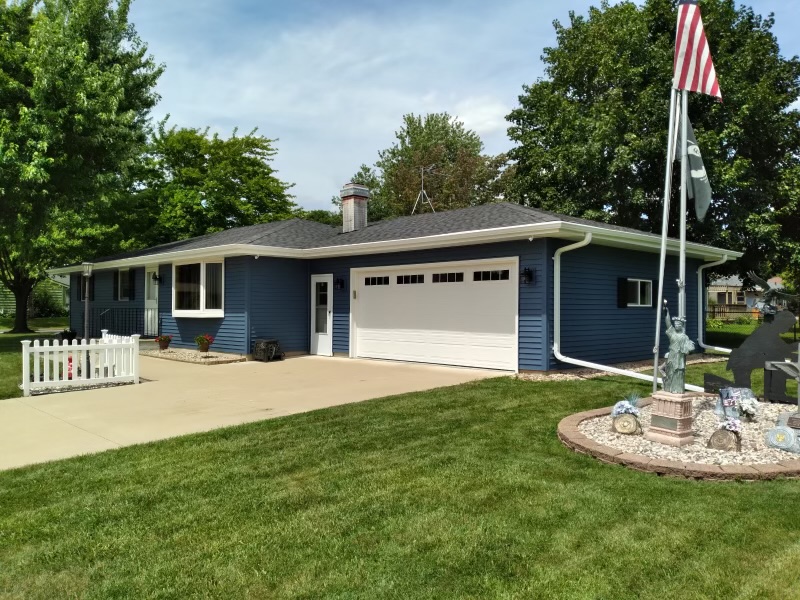When you think about home improvements, it’s important to think about how certain factors influenced your decision when you bought your home.
First of all, you probably had a list of dealbreakers. These are things you either couldn’t live with or couldn’t live without. They’re different for everybody, but probably took the form of:
I can’t live next to __________________.
I need a house that has at least ___ bedrooms.
I need a house that has at least ___ bathrooms.
I absolutely need garage space for ___ cars.
I could never see myself in a house that doesn’t have, or the potential for ________________.
These are the needs of your home-buying process.
Additionally, you were probably looking at more than one house that met your deal-breakers, so you decided you had some wants as well for the house.
I would be willing to pay extra for a house that had ___________________.
If I could get a house with ________________, I might stay there forever.
If this house has the possibility for ________________, we’d definitely make that improvement immediately!
Some home improvements add a lot of resale value
When you considered your wants and needs and made a decision to buy a home, you validated choices made by previous owners all the way back to the day blueprints were drafted.
You may have especially loved the four seasons room that the previous owners discussed for weeks before deciding to add. Maybe, the included fireplace was a dealbreaker for you, and it was almost taken out back in 1983.
Now that you own the home, it’s becoming apparent that decisions you make about your home every day could mean selling it for a great price or having to labor in the market with an unsold home.
The key here is resale value.
Resale value is the ability of your home to sell! It has a few factors but primarily involves discovering what amounts to dealbreakers for the majority of the population and prioritizing these improvements.
If your home needs major repairs, have them done first, as it’s more likely that these items will be deal-breakers for prospective buyers.

Before

After
If you’re familiar with your neighborhood and desired price market, you may know of other changes that will likely meet the dealbreakers of prospective buyers.
Think of a finished basement. If most homes in your neighborhood or price range have a finished basement, this is likely going to be a dealbreaker for many buyers.
Which home improvements have the best return on investment?
Getting beyond saleability and addressing likely dealbreakers, when it comes to making decisions about which home improvements to make, it’s helpful to know which ones are likely to return on their investment.
The majority of the data in this blog is from Remodeling’s 2016 Cost Vs Value Report. Every percentage is given in relation to the investment made and not the total value of the home.
For instance,
Finished basements are likely to provide a 72.8% return on investment. If you spend $16,322.00 to finish the basement on a home you’re listing for $183,000, you’re able to pass 72.8% back to the buyer.
This improvement could increase the value of your home by $11,882.42, giving you a new total of $194,882.42.
Why make improvements that return less than 100% on investment?
This is a great question! There are a couple of answers:
Number one, making improvements is likely to address any dealbreakers homebuyers might have.
You may only recover 72.8% of what you paid to finish your basement, but it also might mean getting 2 prospective buyers into a bidding war for a home that they all would have passed over because the basement was unfinished before.
Number two, these improvements have a synergistic effect on both the saleability and the desirability of the home. So while your finished attic, finished basement and massive kitchen overhaul don’t individually add up to 100% return on investments, the premium look and feel of the home is more likely to attract more buyers with bigger budgets.
Finally, you get to enjoy all of these things in the time you’re spending living in the home before you put it up for sale – whether that’s 5 months or 15 years!
Okay, I get it…so how much do common improvements return?
How much do roof improvements return on investment?
Roof improvements can be considered a saleability issue in many cases. Prospective homebuyers may be reluctant to invest in a home with a failing roof. If the roof is in good condition, however, replacement will see the following returns on investment:
Asphalt Shingles: 71.9 %
Steel Shingles: 85.9%*
* Steel shingles are likely to return more over the life of the roof as they last much longer than asphalt. Your prospective buyers, barring them being vampires, will probably never need to replace the roof in their lifetime.
How much does exterior paint return on investment?
A fresh coat of exterior paint can have one of the biggest impacts on the price of your home. Additionally, it will enhance the home’s curb appeal, which may rope in some initially uninterested passers-by and turn them into prospective buyers.
Neutral paint: 250%
Using a neutral color provides a welcoming and safe feeling for prospective buyers. Looking to add personality? Think about colorful shutters, trim or doors and windows.
What about siding?
In the great Midwest, siding is a crucial part of any home. A one-time investment pays off since it is likely cheaper than the sum of even one or two damages a house will incur without it.
Vinyl siding: 83%
Fiber-cement siding: 79%
Turning an attic into a bedroom?
While you will definitely want to consult with a roofing company before finishing an attic (making sure you’re not setting yourself up for ice dams), it can be a very lucrative improvement.
Additionally, this improvement adds an entire new bedroom to your home, increasing the number of people searching for it.
Bedroom – attic conversion: 77.2%
The two big ones – bathroom and kitchen renovations
Your kitchen and bathroom are two rooms by which homebuyers will judge and remember your home. Investing time and money into making these rooms beautiful/designing showroom pieces pays off on an emotional level with prospective homebuyers.
Statistically, the financial return is a bit lower, but in premium markets, it can be well over 100%.
Kitchen remodel: 67.8%
Bathroom remodel: 72.8%
Home-staging experts recommend trying to make your kitchen as clean and sterile-looking as possible. In the bathroom, make visitors feel like they are in an upscale spa.
Landscaping is king
Good landscaping is another improvement that immediately increases curb appeal and is, therefore, likely to immediately grab buyers. It’s also, statistically, a very smart investment.
Landscaping: 150%
Which is on the low end. John Gidding, host of “Curb Appeal” on HGTV, has described a situation in which a $20,000 investment in landscaping increased the selling price of a home by $200,000. So yeah, it’s a great investment.
Get a free estimate on your home!
If you’re worried about the resale value of your home and want to get any potential deal-breakers straightened out, let us know.
Maybe you’re just looking to increase the value with some smart roofing and gutter improvements.
Contact us today for a free estimate. Click the button below!

